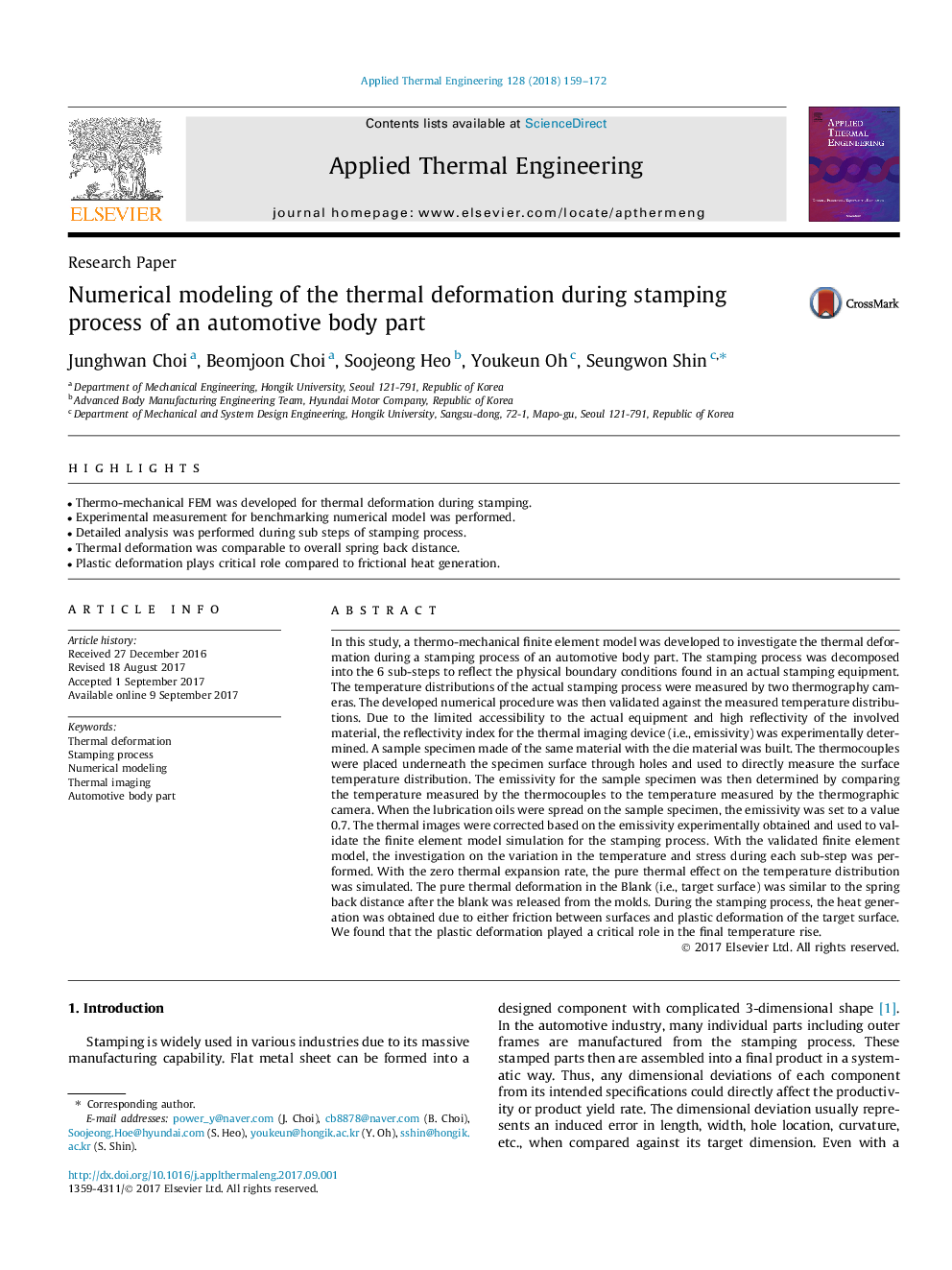| کد مقاله | کد نشریه | سال انتشار | مقاله انگلیسی | نسخه تمام متن |
|---|---|---|---|---|
| 4990808 | 1457101 | 2018 | 14 صفحه PDF | دانلود رایگان |
- Thermo-mechanical FEM was developed for thermal deformation during stamping.
- Experimental measurement for benchmarking numerical model was performed.
- Detailed analysis was performed during sub steps of stamping process.
- Thermal deformation was comparable to overall spring back distance.
- Plastic deformation plays critical role compared to frictional heat generation.
In this study, a thermo-mechanical finite element model was developed to investigate the thermal deformation during a stamping process of an automotive body part. The stamping process was decomposed into the 6 sub-steps to reflect the physical boundary conditions found in an actual stamping equipment. The temperature distributions of the actual stamping process were measured by two thermography cameras. The developed numerical procedure was then validated against the measured temperature distributions. Due to the limited accessibility to the actual equipment and high reflectivity of the involved material, the reflectivity index for the thermal imaging device (i.e., emissivity) was experimentally determined. A sample specimen made of the same material with the die material was built. The thermocouples were placed underneath the specimen surface through holes and used to directly measure the surface temperature distribution. The emissivity for the sample specimen was then determined by comparing the temperature measured by the thermocouples to the temperature measured by the thermographic camera. When the lubrication oils were spread on the sample specimen, the emissivity was set to a value 0.7. The thermal images were corrected based on the emissivity experimentally obtained and used to validate the finite element model simulation for the stamping process. With the validated finite element model, the investigation on the variation in the temperature and stress during each sub-step was performed. With the zero thermal expansion rate, the pure thermal effect on the temperature distribution was simulated. The pure thermal deformation in the Blank (i.e., target surface) was similar to the spring back distance after the blank was released from the molds. During the stamping process, the heat generation was obtained due to either friction between surfaces and plastic deformation of the target surface. We found that the plastic deformation played a critical role in the final temperature rise.
Journal: Applied Thermal Engineering - Volume 128, 5 January 2018, Pages 159-172
